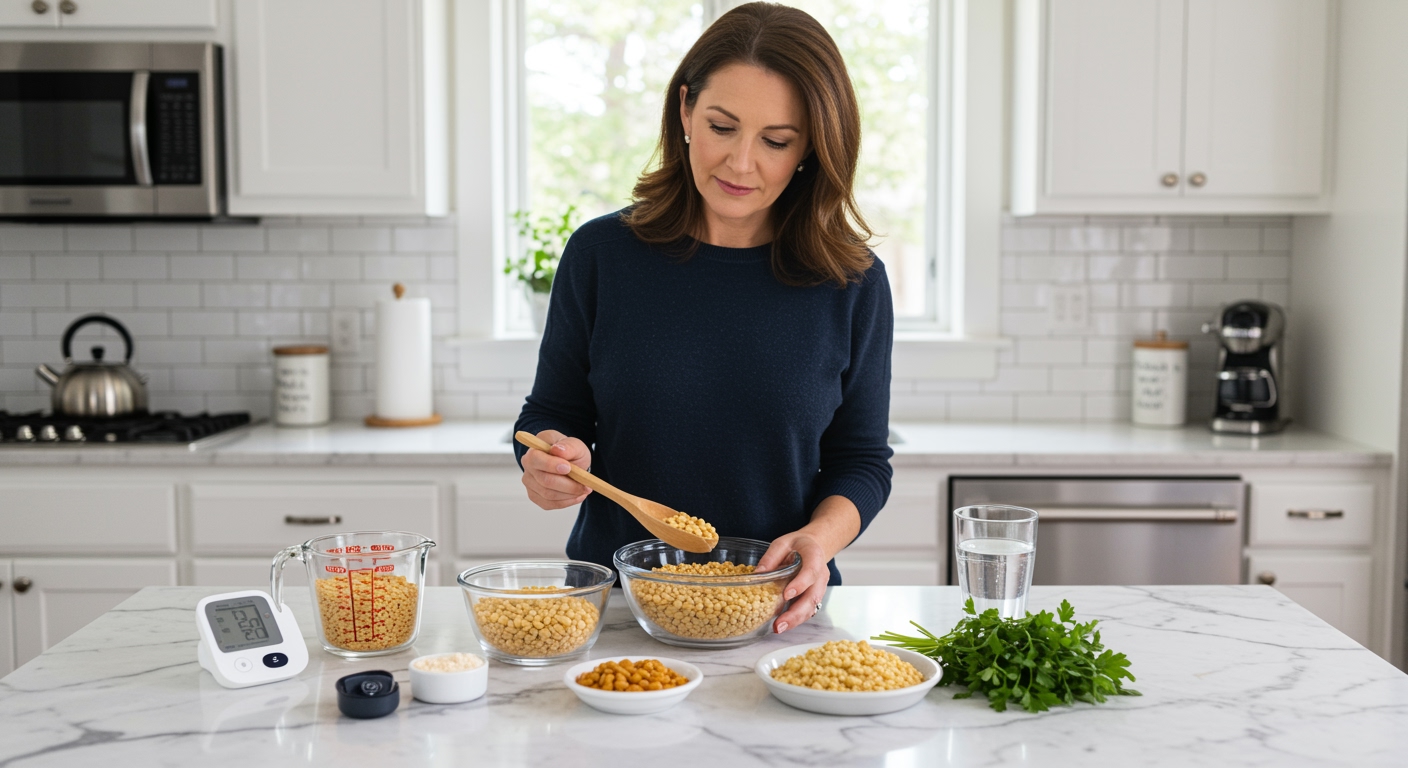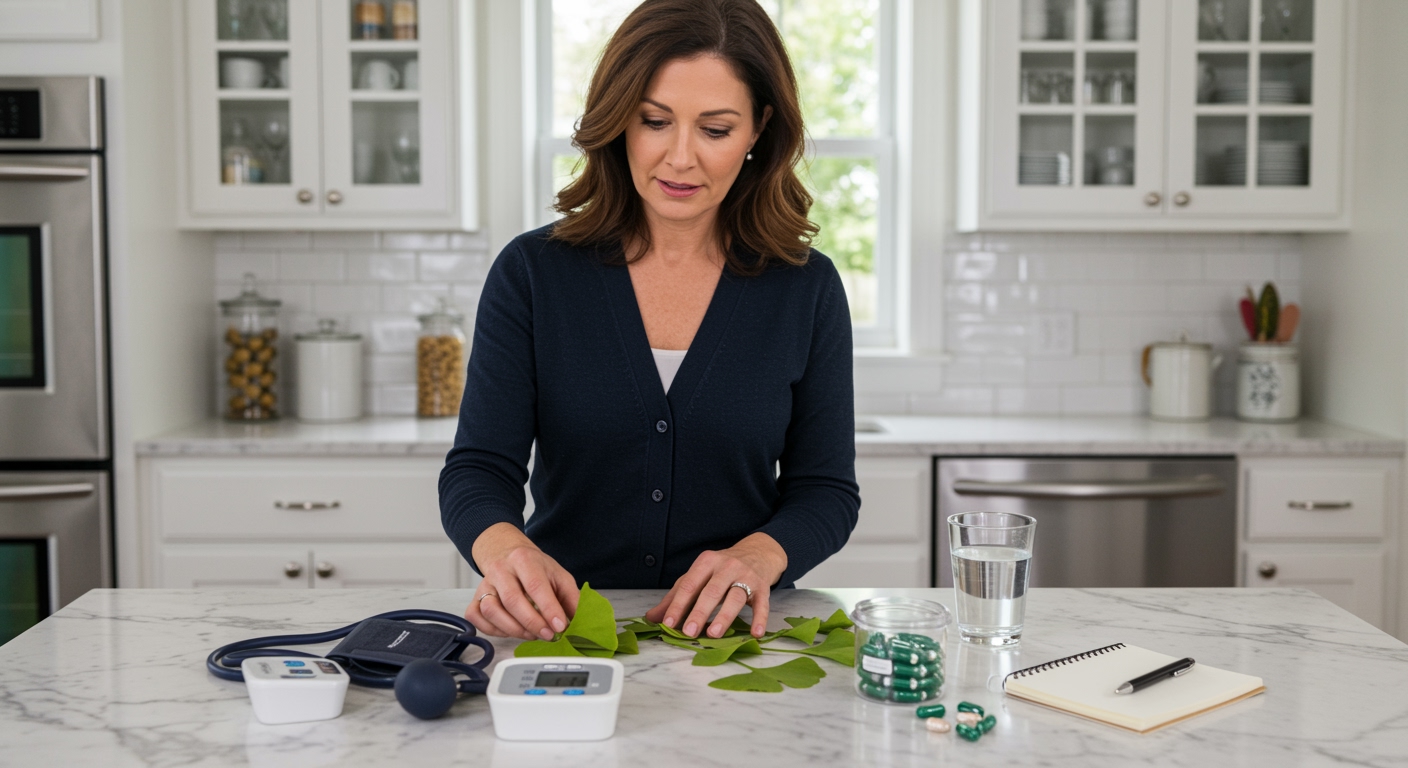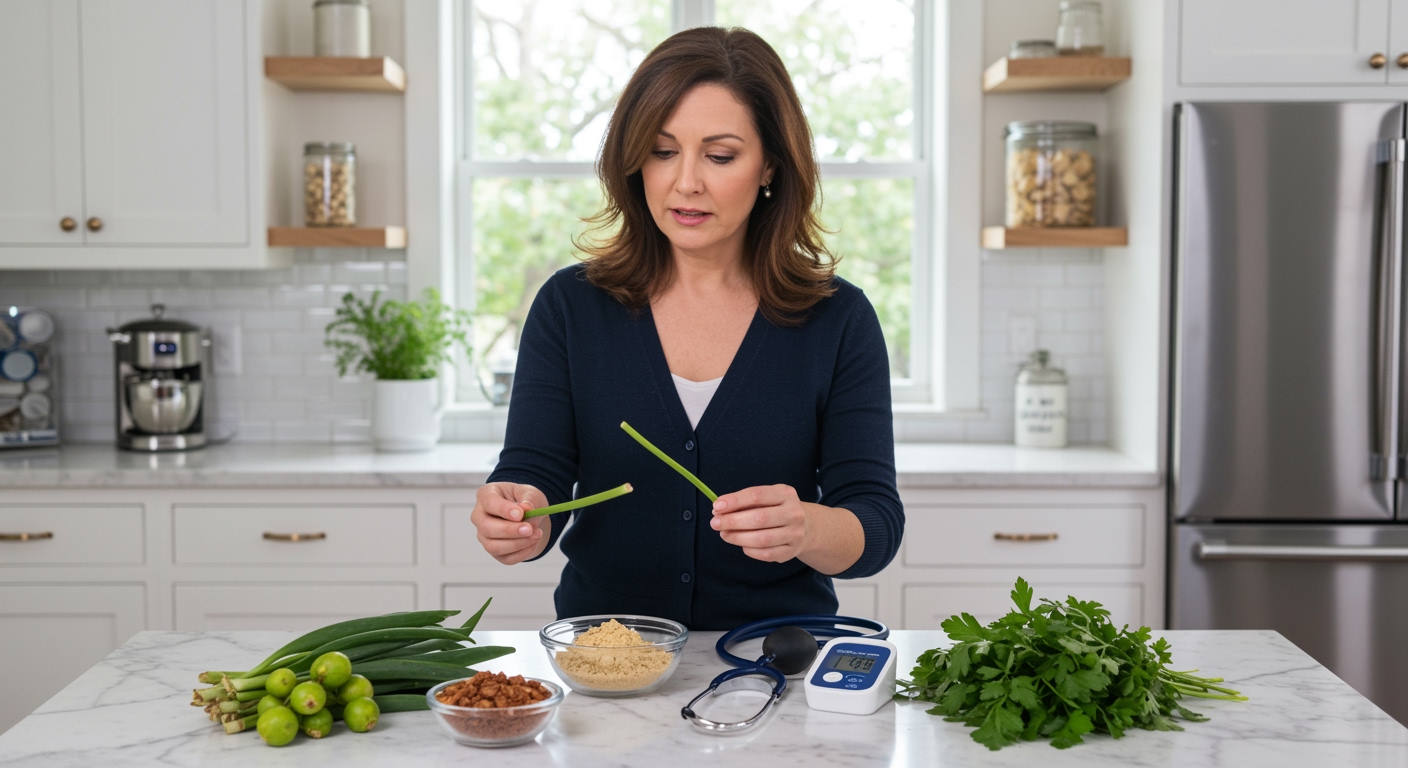✪ Key Takeaway: Split peas can help hypotension patients by providing potassium, magnesium, and protein that support healthy blood pressure levels.
Introduction
Your doctor just told you that your blood pressure is too low, and now you are wondering what foods might help.
Many people with hypotension struggle to find the right foods that can naturally support their blood pressure without causing other health problems.
Hi, I am Abdur, your nutrition coach, and today I am going to explain how split peas can benefit people with low blood pressure and whether you should include them in your daily diet.
What Makes Split Peas Special for Blood Pressure?
Split peas contain a powerful combination of nutrients that directly impact your cardiovascular system.
One cup of cooked split peas provides about 710 milligrams of potassium, which helps your blood vessels relax and maintain proper fluid balance.
The magnesium content in split peas works alongside potassium to support healthy blood vessel function and prevent excessive blood pressure drops.
Split peas also deliver 16 grams of protein per cup, which helps maintain stable blood sugar levels throughout the day.
When your blood sugar remains steady, your body can better regulate blood pressure and avoid sudden drops that make you feel dizzy or weak.
The fiber in split peas slows down digestion and prevents rapid changes in blood pressure that can occur after meals.
✪ Fact: Split peas contain more potassium per serving than bananas, making them excellent for blood pressure support.
How Do Split Peas Affect Your Blood Vessels?
Your blood vessels need specific nutrients to maintain their elasticity and proper function.
Split peas contain folate, which helps your body produce nitric oxide, a compound that keeps blood vessels flexible and responsive.
The antioxidants in split peas protect your blood vessel walls from damage that could worsen hypotension symptoms.
When you eat split peas regularly, the steady supply of B vitamins supports your nervous system’s ability to regulate blood pressure.
The complex carbohydrates in split peas provide sustained energy without causing the blood pressure spikes and crashes that simple sugars create.
This steady energy supply helps your heart maintain consistent pumping strength throughout the day.
✪ Pro Tip: Soak split peas overnight before cooking to improve their digestibility and nutrient absorption.
What Is the Right Amount for Hypotension Patients?
The ideal serving size of split peas for someone with hypotension is about half a cup of cooked split peas per meal.
This amount provides enough nutrients to support blood pressure without overwhelming your digestive system.
You can safely eat split peas three to four times per week as part of a balanced diet for hypotension management.
Start with smaller portions if you are not used to eating legumes, as your digestive system needs time to adjust to the increased fiber intake.
Combine split peas with other blood pressure-supporting foods like leafy greens, whole grains, and lean proteins for maximum benefit.
Avoid eating large portions of split peas in one sitting, as this can cause digestive discomfort and may interfere with the absorption of other important nutrients.
✪ Note: Always drink plenty of water when increasing your fiber intake from split peas to prevent digestive issues.
Are There Any Risks for Low Blood Pressure Patients?
Split peas are generally safe for people with hypotension, but some considerations are important.
If you take blood pressure medications, the potassium in split peas might interact with certain drugs, so consult your doctor first.
Some people experience digestive upset when they suddenly increase their legume intake, which can temporarily affect blood pressure stability.
The high fiber content might cause bloating or gas in sensitive individuals, leading to discomfort that could worsen hypotension symptoms.
Split peas contain compounds called purines, which people with gout or kidney problems should monitor carefully.
If you have diabetes along with hypotension, the carbohydrate content in split peas requires careful portion control to maintain stable blood sugar levels.
✪ Pro Tip: Cook split peas with digestive spices like cumin or fennel to reduce potential stomach discomfort.
How Should You Prepare Split Peas for Best Results?
Proper preparation of split peas maximizes their blood pressure benefits while minimizing digestive issues.
Rinse split peas thoroughly before cooking to remove any debris and reduce the compounds that can cause gas formation.
Cook split peas with a small piece of kombu seaweed or a bay leaf to improve digestibility and add trace minerals.
Add a pinch of salt during cooking, as people with hypotension often need slightly more sodium than those with normal blood pressure.
Avoid adding excessive amounts of high-sodium ingredients like processed meats or bouillon cubes, which can cause blood pressure swings.
Cook split peas until they are completely tender to ensure optimal nutrient absorption and easier digestion.
✪ Fact: Cooking split peas with a small amount of healthy fat like olive oil helps your body absorb fat-soluble vitamins better.
The Bottom Line
Split peas can be a valuable addition to the diet of people with hypotension when consumed in appropriate amounts and prepared properly.
Good nutrition is not about perfect foods, but about making smart choices that support your body’s unique needs.
I would love to hear about your experience with split peas or any questions you might have about managing low blood pressure through nutrition, so please share your thoughts in the comments below.
References
At NutritionCrown, we use quality and credible sources to ensure our content is accurate and trustworthy. Below are the sources referenced in creating this article:
- Medical News Today: Low blood pressure (hypotension)
- National Council on Aging: 10 Foods That Help Lower Blood Pressure Naturally
- NutritionFacts.org: Split Peas
- NHLBI: DASH Eating Plan
- Vinmec: Diet for people with low blood pressure





